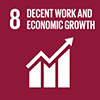Description/achievement of initiative
With its theme "Nature's Wisdom", Aichi 2005 aimed to emphasize the links between humanity and nature in the 21st century. It aimed to give visitors first-hand experience in cutting edge technologies, new social systems and future lifestyles that can offer solutions to the many challenges facing the world.
Source: Shanghai Manual: A Guide for Sustainable Urban Development in the 21st Century (2010)
Aichi 2005 was held from 25 March to 25 September 2005 in Nagoya, Aichi Prefecture of Japan attracting about 22 million visitors. The organizers had set out three key objectives to assess the success of their Expo:
1. Expo performance as a project. The metrics were comfort and safety, visitors'
satisfaction, and reaching a target number of visitors.
2. Sustainability as a model for Expos. To influence the resolution of global issues
by drawing international attention to the development of the Expo theme
"Nature's Wisdom" through high quality presentations.
3. Theme development to encourage new social behavior.
Its vision centered around the idea that each exhibition must have a modern theme corresponding to the expectations of contemporary society and that the theme should give ample scope for a presentation of state-of-the-art scientific, technological and economical progress made in the area chosen, while giving due consideration to the dichotomy existing between human and social aspirations on the one hand and the necessary protection of the natural environment on the other.
Visitors experienced some of the most advanced environmental technologies in the world, which were being tested at the Expo site. These included: biodegradable-plastic eating utensils used everywhere on the site at food concessions; a world-class greening wall (biolung) for suppressing the heat-island effect seen in urban areas; the intelligent multimode transit system (IMTS), which moved visitors within the Nagakute Area, and the fuel cell hybrid bus that linked the perimeter of the site.
Aichi 2005 put major efforts towards encouraging new social behaviour and systems, especially recycling. The venue was litter-free, volunteers were trained to separate trash into nine different categories and many people donated towards environmental causes.
By referring consistently to its environmental theme in the design and in the operations of the Expo, Aichi 2005 was able to greatly increase the impact of its message. Significant efforts were made to make citizens active drivers and supporters of new environmental behaviour and policy implementation. This was achieved by engaging society within the site and beyond through specific programmes and educational campaigns.
Implementation methodologies
Arrangements for Capacity-Building and Technology Transfer
Coordination mechanisms/governance structure
Partner(s)

